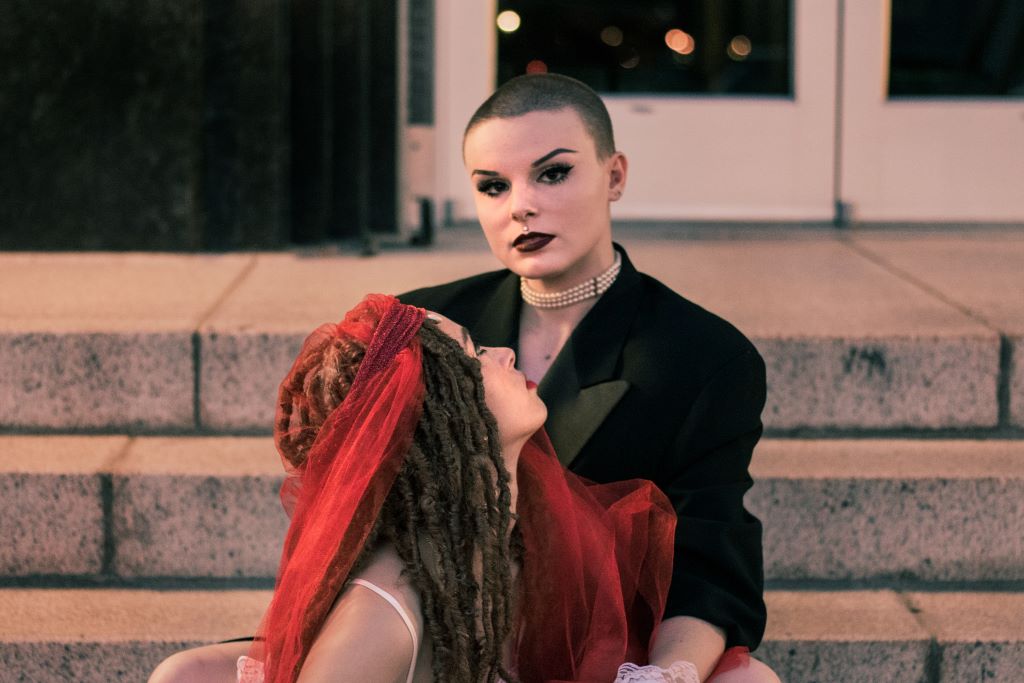
The gender norms that society applies to us from the moment the doctor tells our parents whether we fall into the category of Boy or Girl are stifling to say the least…
Picture this – a person finds out they are pregnant and they excitedly tell their partner. This couple is pleased because the pregnancy was planned and they welcome it. With bated breath they await the week that they are able to find out what the gender of their baby is – ‘we must make plans!’, ‘we must know what colours to paint the room!’. The gender is revealed to them by their doctor, and they are quite excited. In some countries, in some instances, a ‘gender reveal party’ is planned in order to share the great news with all their friends and family.
“It’s a boy! It’s a girl!”
The baby is born. They have a pink room. Back in the doctor’s office, the couple was told “it’s a girl”, so the room just had to be pink; add some flowers and maybe a unicorn or two. It’s a girl. Perhaps a princess here and there. It’s a girl. And just like that this baby is thrust into a childhood of expectations, slowly chipping away at their personality, in order for them to fit the mold that society has created for The Girl.
Alas, what is so wrong with a society built on the notion of The Boy and The Girl? Many people might say that this is natural. The Boy is born and meets The Girl and they fall in love at some point when they are adults, and then they have babies that are either more of The Boy or more of The Girl and so on and so forth. Gender roles are comforting, they are safe – but who are they comforting, and what makes them so safe, especially for those who do not fit into them?
The gender norms that society applies to us from the moment the doctor tells our parents whether we fall into the category of Boy or Girl are stifling to say the least. They permeate our lives from the moment we leave the birth canal – dictating the clothes we wear to the toys we play with, they tell us who we are going to love, they ask us to stick to our roles, and in doing so, then everything will be okay. But these norms are hollow, and harmful.
Two categories of human are implied with the gender norm, The Boy who loves The Girl and The Girl who loves The Boy, when in reality there are as many categories of human as there are humans. Through enforcing these gender norms, not only are we limiting identity and self-expression in many ways, but we are also pushing a heteronormative ideal on people that is simply false, and not a true indication of the variety of identities and sexualities that people experience.
Many may now be saying, “but the world has changed, women have rights and everyone seems to be changing their pronouns” – but alas, is this accurate? A few eye-catching headlines about pesky feminists and a celebrity somewhere changing their pronouns to ‘she/them’ doesn’t mean that society can pat itself on the back for a job well done. This is an illusion, and we must actually speak to those around us in order to find out the truth.
The gender norm is as strong as ever, and is constantly at play, even in the most open-minded of spaces. Consider someone spending their lives working towards relinquishing the expectations society has of them, and then consider that despite this they are nonetheless going to constantly be bombarded with questions related to their gender role. The Girl becomes The Woman and is asked daily about when she is going to have children, and isn’t she getting old now? “You know your eggs start dying at 30 right?” The Boy becomes The Man and is mocked for deciding to be a stay at home dad, “isn’t that what wives are for? And also why is he playing dress up in a skirt with his son”.
The Girl becomes The Woman, and “isn’t it weird how she has lived with her very good friend for ten years now”.
Some may be lucky enough to break away early on, in childhood, from the identity forced upon them by society’s expectations for their gender, particularly if they have healthy influences in their lives, but often it is a battle that lasts a lifetime – and depending on where you live, that battle varies in severity. Constantly having the things one enjoys questioned takes its toll. A young boy enjoying wearing skirts being mocked and ridiculed by family and friends takes its toll. A young girl enjoying clothes from the ‘boy’s aisle’ being told she is not allowed to, takes its toll. A man wearing heels being verbally abused in the street takes its toll.
The questions we should be asking ourselves are – why do we tell children, and therefore convince adults, that toys and clothes and tools of self-expression have genders? Why do we teach children that heterosexual relationships are the standard, and anything else is ‘out of the ordinary’ – is an other? Why do we have so many expectations for who someone is going to be based on a doctor simply saying “it’s a girl”? At times, it is the smallest actions and reactions that are most momentous, so much so that they can entirely change a person’s view of themselves as they grow up. The world cannot change until our perspectives do.
There is nothing wrong with unicorns and princesses. So much so, that we should allow any child access to them. Princesses are strong and smart and kind, and unicorns can be both magnificently wondrous and full of magic – just like the children who wish to play with them.
Humans are beautiful for their differences, and awesome for their potential – so what do we really gain from pushing the narrative that imagination and play, and therefore life itself, needs barriers like gender roles?
#għajjejtuxbajt
Do you have a personal experience in relation to gender norms that you’d like to share with us at wham? Contact us or send us an email at [email protected]

Għajjejt u Xbajt is a feminist platform by and for feminists, and those with questions for them. It is a non-judgemental space for all who strive for the same aim: equality and progress. They don’t claim to have all the answers, but are very dedicated to posing the questions. #għajjejtuxbajt





